Principles of Sterile Asepsis
1/23
Earn XP
Description and Tags
A collection of key questions and answers for reviewing the principles of sterile asepsis in nursing.
Name | Mastery | Learn | Test | Matching | Spaced |
|---|
No study sessions yet.
24 Terms
What should be checked for a sterile package before use?
Integrity for punctures, tears, discoloration, moisture, and the
Expiration date.
Why is a sterile field established immediately before a procedure?
There is a direct relationship between the time the sterile field is opened and the presence of airborne contaminants.
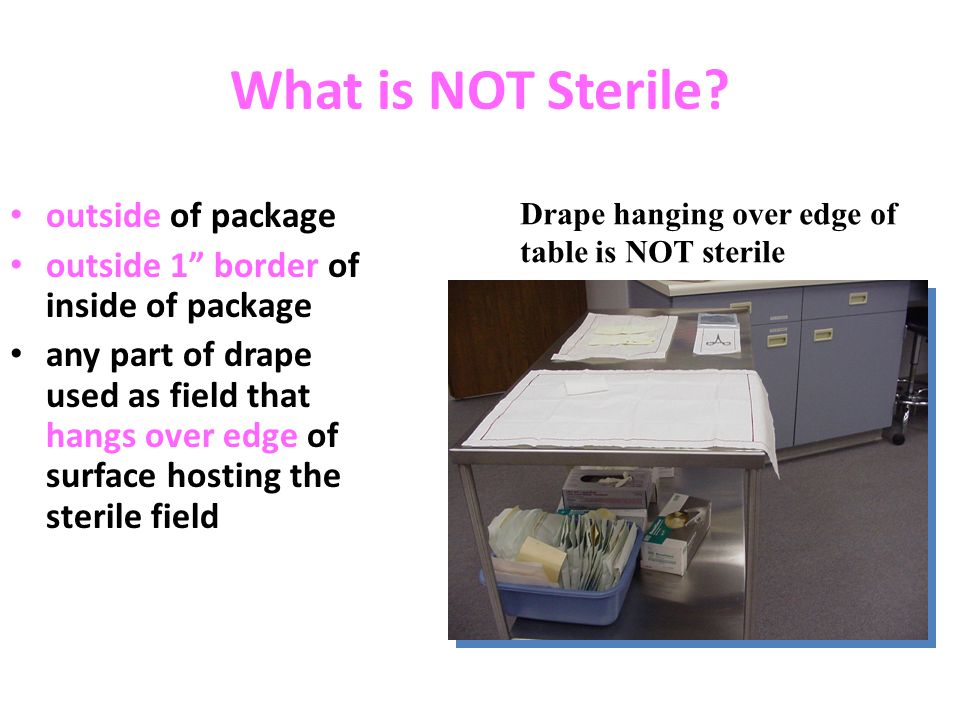
What is the contamination status of the edges of a sterile field or container?
Edges are considered contaminated;
A 1 inch (2.5 cm) edge of a drape is also contaminated.
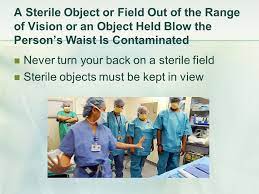
What happens to a sterile field or object that is out of the range of vision or below a person's waist?
It is considered contaminated.
If a nurse turns away from or loses direct visualization of a sterile field, it is considered a break in sterile technique and the entire sterile field must be considered non-sterile.
How many sterile objects should be placed on a sterile field?
Only sterile objects may be placed on a sterile field.
What occurs if a sterile surface contacts a wet, contaminated surface?
The sterile field or object is no longer sterile.
What must be maintained to protect the sterile field during movement?
Movement around and in the sterile field must not compromise or contaminate it.
What should be done if there are any questions regarding the sterility of an item or field?
The item or field is considered unsterile.
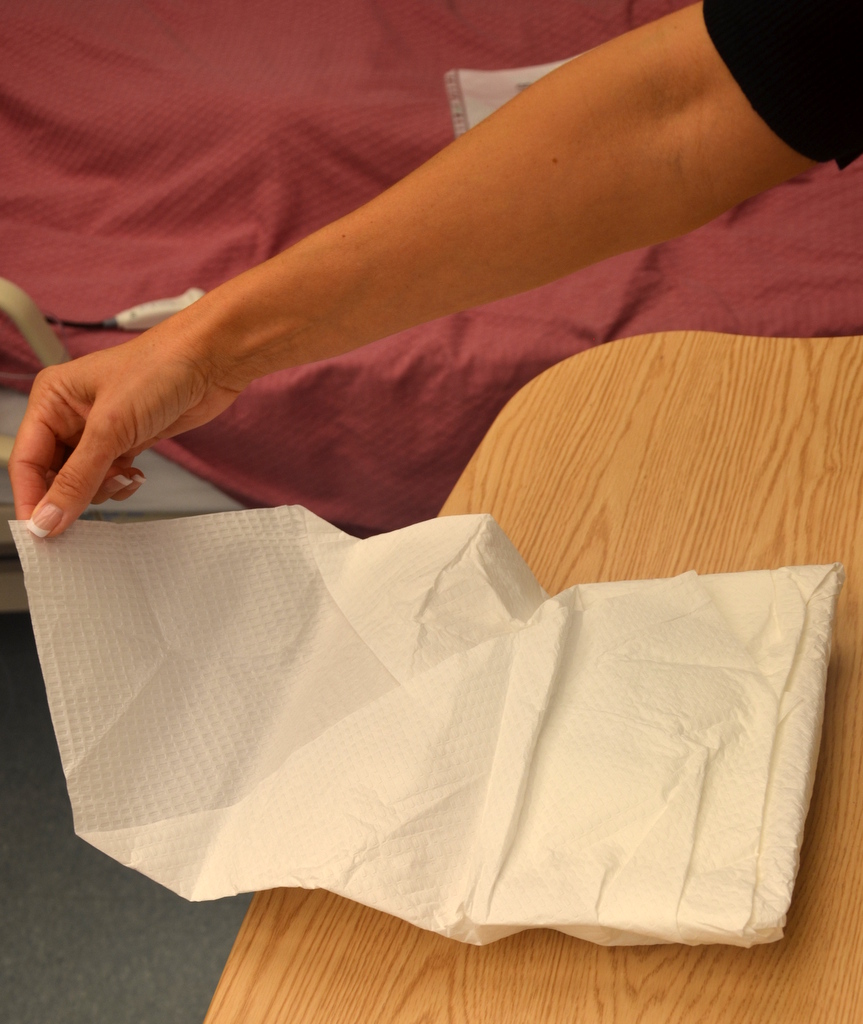
When opening a sterile indwelling catheter kit, the first flap should be opened ________ ?
Away from you to maintain the sterile field and prevent contamination from your body or clothing.
If a nurse wears scrubs into the facility from outside, does the nurse need to change them before entering the restricted and semi-restricted areas of the surgical environment?
Yes!
Scrubs help contain bacterial shedding and promote environmental controls, but if you step outside the restricted or semi-restricted areas, you MUST change into new scrubs.
Some examples of breaking sterile technique or introducing contamination into a restricted surgical site include:
Touching non-sterile surfaces like your hair, clothing, or unsterile equipment with sterile gloved hands
Allowing sterile items to come into contact with non-sterile surfaces
Coughing, sneezing, or talking over the sterile field
Reaching across the sterile field
Losing line of sight of the sterile field
Dropping sterile items on the floor
Allowing sterile drapes to become dislodged or fall off the sterile area
Not properly decontaminating and prepping the surgical site
Improper gowning and gloving technique
Failing to maintain sterile boundaries during the procedure
Is a fresh set of scrubs washed from home considered sterile or conforming to aseptic techniques?
No, fresh scrubs from home are not considered sterile.
They may still carry bacteria and should be changed for those provided by the facility to maintain aseptic techniques in the surgical environment.
Does a person who is bald have to apply a surgical hat before entering the surgical site?
Yes, a bald person must wear a surgical hat to prevent hair and scalp debris from contaminating the sterile surgical environment.
This ensures adherence to aseptic techniques.
Does a nurse have to remove jewelry before entering the surgical environment?
Yes, a nurse must remove all jewelry before entering the surgical environment to prevent the risk of contamination and to maintain aseptic techniques.
What is the acceptable standard for removing a mask?
Remove mask carefully by the TIES, taking care to avoid touching the filter portion of the mask and discard immediately.
Handling the filter portion of the mask after use can transfer bacteria into the surrounding environment, compromising the sterile field.
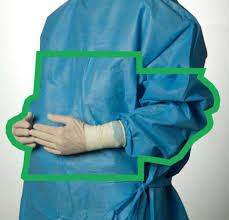
Which part of the gown is considered sterile?
Sterile gowns are considered sterile in the front from the shoulder to the level of the sterile field and 2 inches above the elbow to the cuff.
Because the cuff tends to collect moisture, it is not an effective bacterial barrier and is NOT considered sterile.
That is why you must cover the CUFFS with STERILE GLOVES.
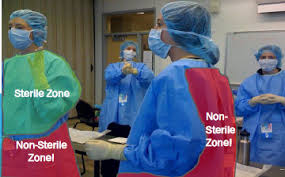
What is the difference between general hand hygiene and surgical hand asepsis?
General hand hygiene refers to the decontamination of the hands by handwashing with an antimicrobial or plain soap and water or using an antiseptic handrub.
Surgical hand asepsis refers to the antiseptic surgical hand scrub or antiseptic hand rub performed prior to applying sterile surgical attire.
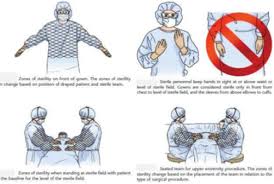
During an aseptic procedure, lowering the arms below the waist is generally considered ?
A break in sterile technique
What is a major source of microbial contamination in the surgical environment?
Skin is a major source of microbial contamination.
Although you cannot make your skin sterile, you can make it surgically clean by reducing the number of micro-organisms on it by cleansing your nails, hands, and forearms PREOPERATIVELY (surgical hand asepsis).
Under what conditions can I use alcohol-based handrubs?
Use alcohol-based handrubs to degerm your hands only if they are NOT VISIBLY SOILED.
When must I wear protective eyewear in the surgical suite?
Whenever you anticipate eye, nose, or mouth contamination as a result of spraying or splashing of blood droplets or other infectious materials.
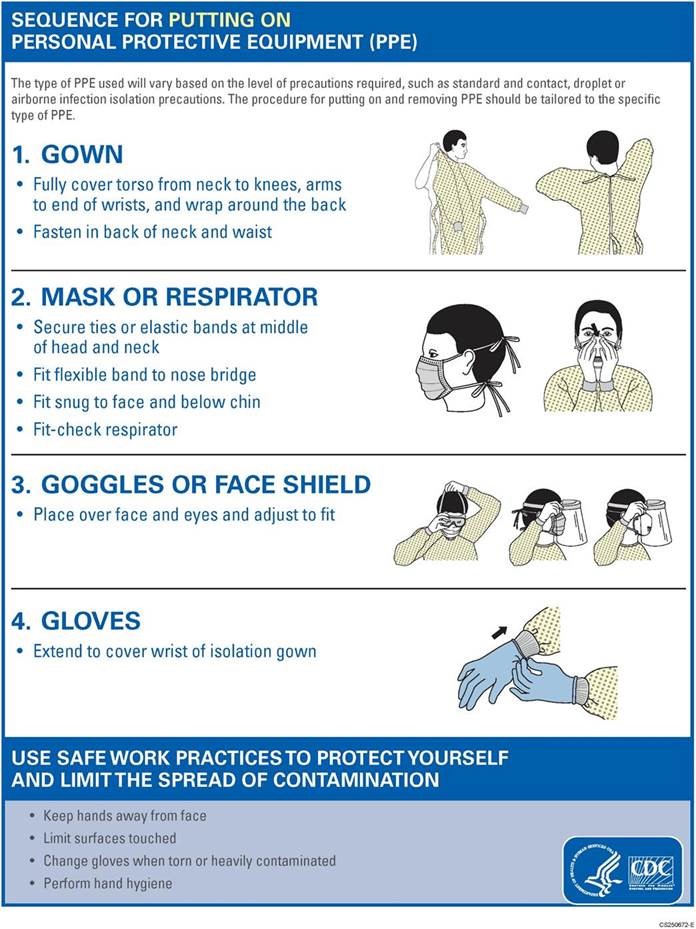
What are the proper sequence for putting on PPE (gown, goggles, mask, gloves)?
Gown
Mask or respirator
Goggles
Gloves
Mnemonic: “Got My Goggles & Gloves”
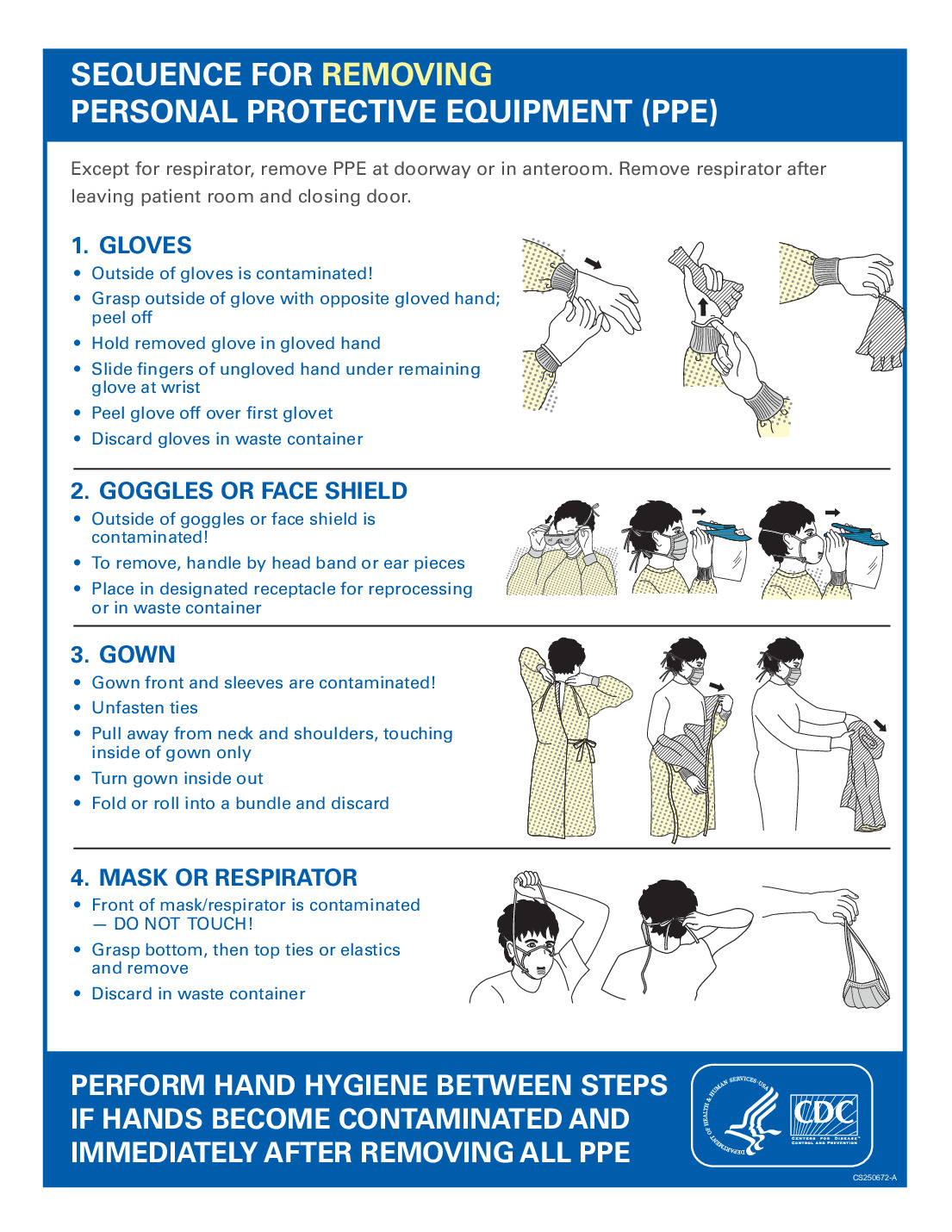
What is the proper sequence for removing PPE equipment?
Glove
Goggles or face mask
Gown
Mask or respirator.
Remember: remove them in the reverse order of which they were applied, to minimize contamination, but MASK is the last thing you remove.
Which of the following can potentially contaminate a sterile field?
A) Airflow or drafts over the sterile field
B) Lowering arms below the waist during the procedure
C) Losing direct line of sight of the sterile field
D) All of the above
All of the above.
Airflow or drafts we may not see but can carry microorganisms that contaminate the sterile field.